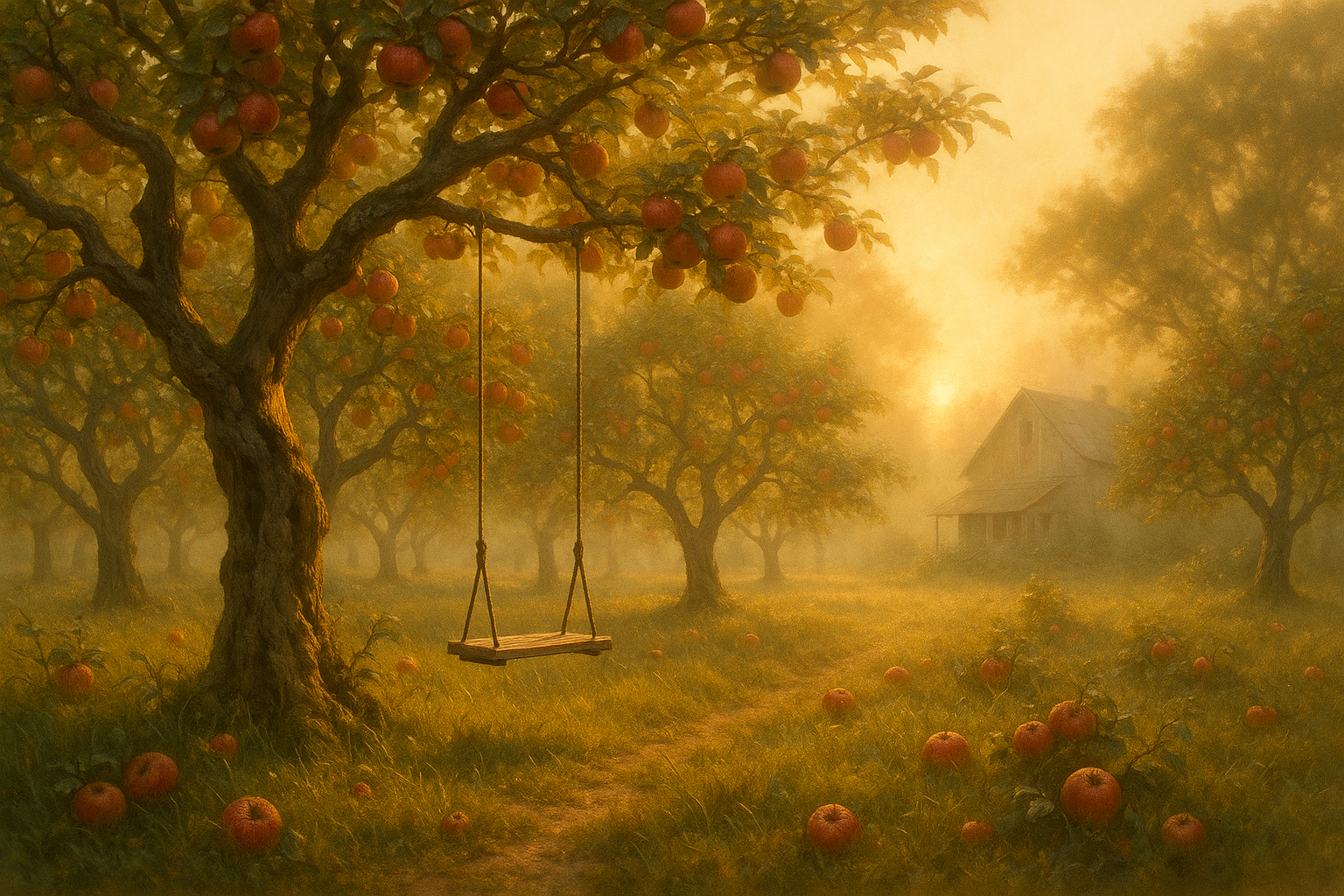
Old apple trees carry the stories of those who planted them, sheltering memory in every branch.
The Orchard’s Memory: Heirloom Trees and the Stories They Hold
Beneath the blush of a spring blossom or the gnarled twist of an old apple limb lies a memory not written but grown. Heirloom trees do not merely produce fruit. They carry stories – ripe, heavy, sweet with the taste of time. A pear tree that once stood beside a homestead now forgotten may still bloom each spring, whispering the names of children who once swung from its limbs. An apricot tree, planted at a wedding decades ago, still bears witness to anniversaries that passed like wind. These trees do not forget.
Heirloom trees are not modern hybrids bred for uniformity or shelf life. They are the bearers of variety, character, and lineage. Each tree is a living archive. Its roots recall the soil of a different century. Its fruit carries the shape of a hand that grafted it in hope. Before there were seed catalogs and barcodes, there were neighbors trading cuttings, families passing saplings like heirlooms of the heart. To plant a tree was to plan for a future you may never see – but someone else might.
Walk through an old orchard and you’ll hear it, if you listen right. Not the hum of bees alone, but the pulse of memory rising from bark and blossom. Every bend in a branch tells you where snow once broke it. Every scar along a trunk is a chapter. Some trees lean east from years of prevailing wind. Some hold onto fruit long past ripeness, as if reluctant to let go of what they’ve made. There is wisdom in these acts, unspoken but clear.
Many of these trees are rare now, some nearly lost. A russet apple with skin like worn leather. A plum that bruises easily but tastes like sunlight. A quince that demands patience. We live in a time of selection, of preferences shaped by convenience, but the old trees remind us that perfection was never the point. It was flavor. Memory. A tie to the hands that came before.
Gardeners know. The ones who keep slips and scions in their pockets. Who graft with reverence and speak to trees as kin. They are stewards of lineage, coaxing history from rootstock. They know that to revive an heirloom variety is to invite the past to bloom again. And sometimes, the fruit that returns after years of dormancy tastes like something long forgotten – a flavor that makes silence settle, just for a second, as you try to name what it reminds you of.
There are communities where old orchards are being mapped like libraries, each tree recorded like a paragraph. DNA tests reveal family trees of trees, tracing lineage across continents and generations. A fig that once grew in an ancestor’s village appears again in a backyard thousands of miles away, planted by a great-grandchild who never saw the original but felt its echo in family stories.
To keep an heirloom tree is to say that memory matters. That what once nourished us still can. That taste can be a kind of time travel. These trees offer us a slower kind of fruit – one that ripens not just with sun and water but with care, patience, and continuity. In their crooked trunks and wide canopies, they shelter more than shade. They shelter identity.
When you plant such a tree, you are not planting alone. You are planting with everyone who ever tasted that fruit, who ever rested beneath its leaves. And one day, someone you’ll never meet might bite into an apple and feel, without knowing why, that they’ve come home.
These trees are memory made living. They are monuments not of stone but of stem and seed. They are not loud. But they endure.
Did You Know?
![]()
- The term “heirloom” in horticulture refers to plant varieties that have been passed down for 50 years or more.
![]()
Some apple varieties traced in old American orchards date back to the 1600s and are still fruiting today.
![]()
Grafting, the process of combining the tissues of two plants, has been used since at least 2000 BCE to preserve heirloom varieties.
FAQs About Talking Trees
What makes a tree an heirloom?
Heirloom trees are varieties that have been handed down through generations, usually pre-dating industrial agriculture. They’re often grown for taste, uniqueness, and historical or cultural value.
Can I grow an heirloom tree at home?
Yes. Many nurseries specialize in heirloom varieties. Be sure to choose one that suits your climate and soil, and learn how to properly graft or plant from trusted sources.
Why are heirloom varieties important?
They preserve biodiversity, unique flavors, and cultural heritage. In a world leaning toward agricultural uniformity, heirloom trees are a vital link to the past.
Have questions about the trees in your own yard?
Tip Top Arborists is here to help you care for your living legends. Let our certified arborists provide expert guidance for a lifetime of healthy trees.
